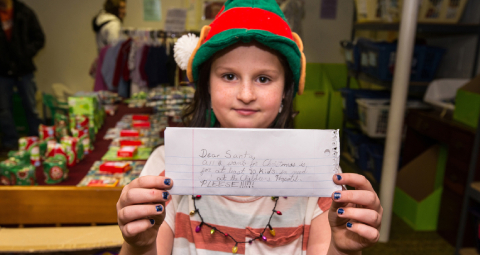December 13 | ![]() 0 COMMENTS
0 COMMENTS ![]() print
print

Every season of Liturgy has its own magic and enchantment, including Christmas
In his Letter from America, Brandon McGinley's finds Christ at the core of the most enchanting time of the year.
My favourite time of the year has always been late November to the New Year, from the American Thanksgiving to Christmas. I’m far from the only child to have found the season—from the snowy weather to the music to the decorations to the parties and family traditions—to be enchanted.
Now, with four young children of my own, this time of year feels a little different. I still love it, but the veil has been lifted and the inner workings of holiday magic have been exposed: enchantment is a lot of work.
As a kid, all of the stuff I loved about Christmastime just happened. Now, my wife and I have to make it happen: decorations have to be unboxed, put up, then boxed up again; music has to be acquired and cued; parties have to be planned and food purchased and prepared; children have to be gathered and bundled up for outings; and, of course, presents have to be purchased and wrapped.
Value
All this effort can sometimes feel tedious, but I really do think it’s valuable. The world as children perceive it is always potentially enchanted. They don’t see the world, thank goodness, in terms of materialism and efficiency and practicality. The magical is for them a genuine reality, and it’s just up to the adults to set up the conditions that reveal that magic.
That is, Christmas trees and Advent calendars and festive wreaths aren’t accessories on our everyday reality that give it the illusion of enchantment, but rather they reveal the enchantment that is already all around us.
This is why a warmly decorated home feels not just more festive or traditional, but more human and even more real than one with whitewashed walls and minimalist décor.
This lesson extends beyond Christmas, and beyond childhood. It is a popular lament in Christian circles that we live in a ‘disenchanted’ age. That means different things to different people, but generally it refers to a spirit of materialism that is preoccupied with the immediately practical and denies that anything that can’t be manipulated for profit is worthwhile—or even real. It’s a spirit that conflates the childlike with the childish, seeing wonder and mystery as weaknesses to be overcome, not facts of our nature to be embraced.
Enchantment
And so we talk about rediscovering that childlike recognition of enchantment—but how? The lesson of this season is that it’s about arranging our homes and our lives in such a way that the reality of the supernatural becomes more readily apparent. Christmas traditions, at their best, make our everyday reality of pointless meetings and calculations and entertainments seem humdrum. They point to something more.
But it’s important what exactly that ‘something more’ is. It’s not about tradition for the sake of tradition, or vaguely warm feelings, or some kind of pagan or new age version of enchantment. No, any re-enchantment of our culture must be directed toward revealing the truth of our supernatural reality, and specifically toward the person of Jesus Christ.
This is why Christmas is such an important time to practise re-enchantment—and it is also a reminder that it’s a lot of work. But it is worthwhile work, the kind of work that requires and exercises an old-fashioned virtue called longanimity.
Longanimity is the discipline to put in effort now for a goal that is beyond the horizon, like planting and nurturing a tree that won’t bear fruit for many, many years, perhaps until after we are long dead.
Beautiful practise
The Church, and all the cultures and communities that She encompasses, have amassed a tremendous wealth of beautiful and dramatic ways to practise re-enchantment. Think of Eucharistic processions and other public prayer events. Think of all the festivals that used to celebrate saints and devotions until they were all overwhelmed by the secular civil-corporate calendar. Think of all the sacred art that fills our churches and could easily fill our homes.
Christmastime is genuinely special, but it shouldn’t be the only time of year that feels enchanted. Every season, natural and liturgical, has its own magic, waiting for us to get to the work of revealing it to ourselves, our families, and the world.










